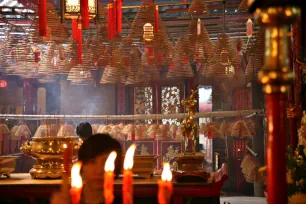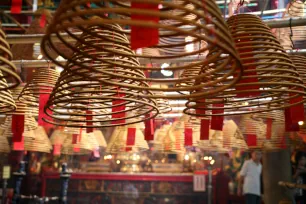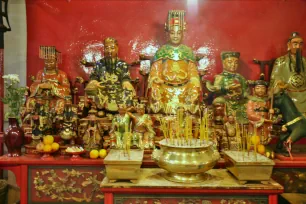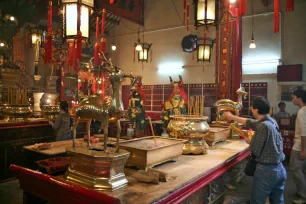Hong Kong’s magnificent Man Mo Temple is among the oldest and most well-known temples in the territory. It was built in 1848, during the early years of British rule in Hong Kong. Though it’s been rebuilt a number of times, much of the original structure still remains.
The Significance of the Temple




The words Man Mo mean “civil” and “military”, and this temple, like many other Man Mo Temples located throughout China, is dedicated to two very different gods. Man Cheong is the God of Literature, while the name Mo refers to Kwan Yu, the god of war or martial valor.
The images of the two gods are enshrined inside the temple, which is located on Hollywood Road. You’ll find Man dressed in a green robe, holding a writing brush in his hand. Kwan Yu, dressed in red, totes a long sword. Statues of other Chinese gods are found throughout the temple, particularly ones that are important to those who are part of the Buddhist and Taoist communities.
During the 1900s, it is said that locals came here to solve disputes that could not be solved by British law. The process of finding an equitable solution involved the legal system of the Qing Dynasty, which stated that both plaintiff and defendant should make a promise in the temple and write it – along with a curse or punishment – on a piece of yellow paper. They then killed a chicken, chopped off its head, let its blood drip onto the paper, and burned the paper. It was believed that because the promise was made before the gods, if the individual broke the promise they would suffer the indicated punishment. Many Chinese preferred this justice system to the British system.
The Temple Today
While the Man Mo Temple is no longer used for settling disputes, believers come here for a number of other reasons. Devotees burn huge bell-shaped coils of incense that hang from the temple’s ceiling in hopes of attracting the attention of the gods. Some also believe the incense is food for the “spirits” that have gone before.
Wooden sedan chairs – with intricate carvings of the God – sit near the entrance to the temple. Most date back to the nineteenth century and were once used during festivals to transport statues of the gods through the streets of Hong Kong.
A large number of fortune-teller stalls are located near the temple. Both locals and visitors stop by to check out their chances for good luck in the future. In this Hong Kong version of fortune-telling, these clairvoyants shake a bamboo tube that contains “fortune sticks”. There’s a number on each stick that corresponds to a “fortune”, and the one that falls out first will determine your destiny.

